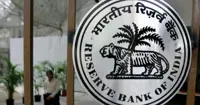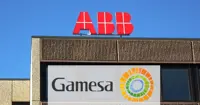OECD sees economic slowdown continuing
12 May 2009
The Paris-based Oranisation for Economic Cooperation and Development (OECD), representing 30 industrialised member countries and having enhanced cooperation with the 10 major developing nations, forecast continuation of strong economic slowdown although some countries are showing tentative signs of a 'pause' in the slowdown.
The May release of the outlook indicated that its Composite Leading Indicator (CLI) further dropped by 0.1 to 92.2 in March for the OECD economies, which is 9.5 points lower than last March. The indicator had fallen since last November when it recorded a drop of 1.3 points.
However, Britain, France and Italy are showing some positive signs of a ''possible trough''.
''Weak though these signals are, they are present in the majority of the CLI component series for these countries. In other major OECD economies the CLIs continue to point to deterioration in the business cycle, but at a decreasing rate. However, with the exception of China, where signs of a pause have also emerged, major non-OECD economies still face deteriorating conditions'', the report said.
The CLI is considered as an authentic indicator of global economic outlook, based on a wide range of parameters of the economic activity in respect of each country. It is intended to signal turning points of business cycles - peaks and troughs - and have had a good track record of depicting qualitative information on short-term economic movements around its long term potential level of 100.
An increasing CLI above 100 indicates an economic expansion and a decreasing number below 100 signals slowdown. A downturn is represented by a decreasing CLI above 100 and a recovery is indicated by an increasing value below 100.
For the G-7 group of major industrialised nations, the CLI fell to 91.4 in March from 91.7 in February, 10.3 lower on year-on-year basis. For the Eurozone, the CLI showed a slight increase of 0.2 to 94.2, which is 7.9 lower compared to 2008.
CLI for Japan fell by 1 to 89 in March from 90 in February, a fall of 12.3 compared to 2008. The US dropped by 0.6 to 89.9, 11.8 lower than previous year. Canada and Germany fell by 0.4 each to 91.1 and 89.6, respectively.
On the other hand, CLI for France, with relatively large sector of its economy under public sector, rose by 1.2 to 97.9 in March, only 2.7 lower compared to last year. Italy climbed to 97.4, an increase of 0.7 and Britain too had a modest rise of 0.3 to 96.6.
Of the major developing countries, only China showed a 0.9 rise in its CLI which was 93.0 in March compared to 92.1 in February and recording a fall of 9.5 over last year.
India's CLI fell by 0.3 to 92.6 in March from 92.9 in February, lower by 9.4 compared to the previous year.
Russia and Brazil had the maximum fall in CLI in March. Russia registered a drop of 1.4 to 84.9 from 86.3 in February, a staggering 21.8 slump compared to last year. Brazil's CLI dropped by 1.9 to 92.7, 13.2 lower than a year ago.
The OECD reported an unemployment rate of 7.6 per cent in March for the area, 0.3 per cent higher than in February and 2.0 per cent more than last year.
The Eurozone registered an unemployment rate of 8.9 per cent in March, a 0.2 per cent rise over the previous month and 1.7 per cent compared to 2008.




.webp)


























